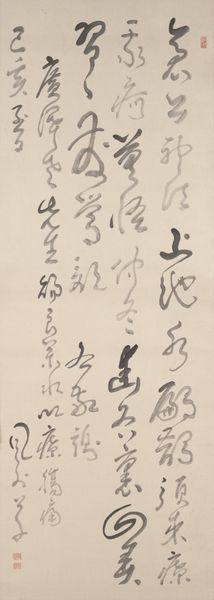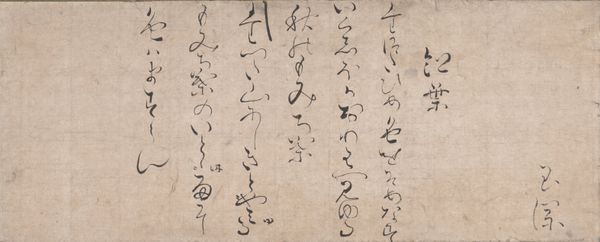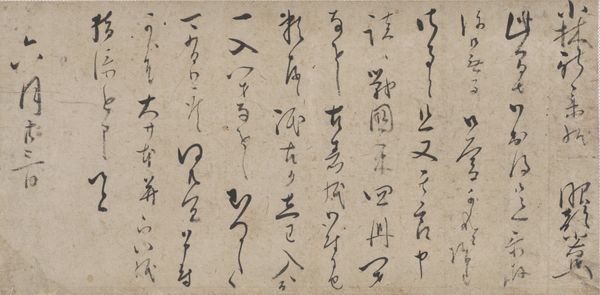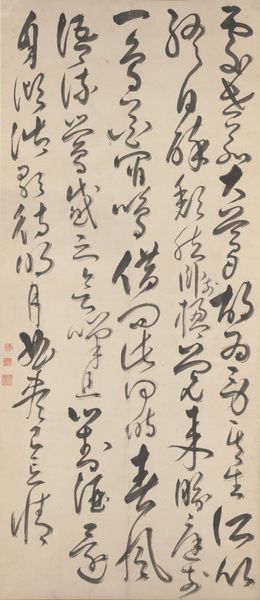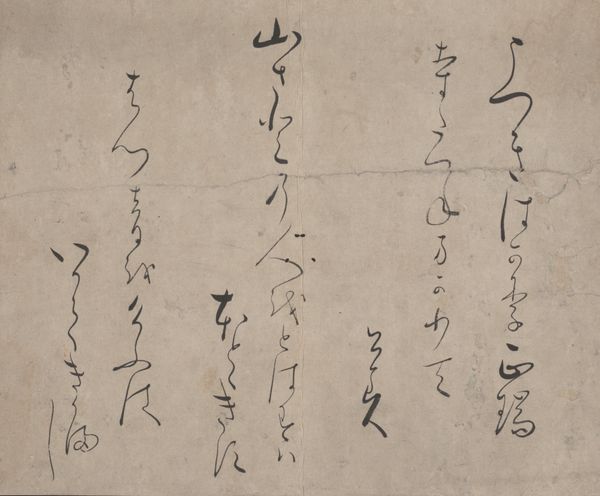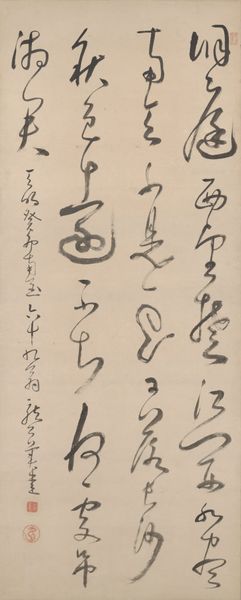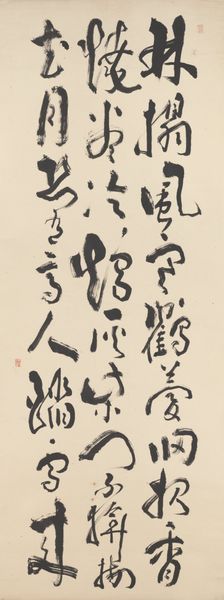
drawing, paper, ink
#
drawing
#
asian-art
#
paper
#
ink
#
abstraction
#
calligraphy
Dimensions: 6 1/4 × 14 5/8 in. (15.88 × 37.15 cm) (image)33 3/4 × 18 3/4 in. (85.73 × 47.63 cm) (mount, without roller)
Copyright: Public Domain
Curator: Looking at this piece, I am struck by the inherent beauty of lines and shapes transcending their literal meaning. It’s Tachihara Kyōsho's "Letter," dating back to the 19th century and held here at the Minneapolis Institute of Art. The materials used were quite simple – ink on paper. Editor: Yes, immediately what catches my eye is the texture of the paper and the visible strokes of the brush – the labor involved in each carefully placed character, or rather the impression thereof. Is this simply an aesthetic appreciation of a script for those unable to read it, its function eroded away over time? Curator: I see your point, but consider this – isn’t that erosion a kind of revealing? What was once functional becomes, well, purely feeling. I confess I can’t read it either, but I sense longing, a sort of deliberate unfolding across the page. The strokes have this organic fluidity, almost like water rippling, or perhaps smoke from a distant fire, conveying intimacy, if you will, across distance through delicate script, through mere materials... it seems a perfect confluence between language and form. Editor: Delicacy certainly, and I agree it makes for something striking even if the utility of the ‘letter’ is no longer functional for modern viewers such as you and me. Knowing more about the kind of paper used would be very informative about the economy of production it participated in; that way the function comes through to us still in an indirect way – was it costly, widely available, of a high quality or quite standard...? These elements will inform my understanding more fully. Curator: It’s precisely that dance between function and pure aesthetic that thrills me, though. It almost asks: what matters more, the words themselves or the energy poured into forming them? The labor is there as you pointed out, but doesn't the very act of crafting a handwritten note already imply care, intention, elevating simple communication into something more, maybe into something more durable too? It stands out in this museum where grand, large statements often make more noise. Editor: Absolutely. Even something as simple as paper and ink holds the weight of societal structure, trade, and the very human act of marking our existence – our means of cultural survival – with these materials. Even more profound when they enter the space of the gallery and have to redefine themselves. Curator: Indeed. It whispers tales of journeys both material and deeply personal, something that simple tools allowed its maker to convey in quietness. Editor: Yes, even for this piece, a closer attention to detail can further amplify this relationship.
Comments
No comments
Be the first to comment and join the conversation on the ultimate creative platform.


